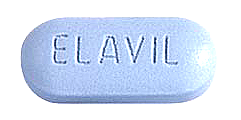Popular Articles
- Best Vitamins for Fibromyalgia Pain
- Anatrin Supplement Facts
- Herbal Treatment of Fibromyalgia
- Medications That May Interact with Anatrin
- Alternative Treatments for Fibromyalgia Pain
- Is Paleo the Best Diet for Fibromyalgia?
- 39 Signs and Symptoms of Fibromyalgia
- Omega-3 for Fibromyalgia
- 5 HTP and Fibromyalgia
- Fibromyalgia- Foods to Avoid
- More Articles ...
 Magnesium for FibroIn This Article
While all vitamins and minerals are important, there is a special connection with magnesium for fibromyalgia Treating fibromyalgia, in part, as a magnesium deficiency, is getting significant results. Magnesium supplementation should be considered in mainstream medical and alternative protocols for fibromyalgia.
Magnesium deficiency and fibromyalgia symptoms mirror each other in many ways. This has caused the medical community to study whether magnesium levels are low in fibromyalgia patients. The answer has been a resounding “yes,” which has led to numerous studies to identify how magnesium and fibromyalgia relate to one another. Magnesium is a critical mineral in the human body. Magnesium balances calcium. Half of the body’s magnesium stores are found in the bones, underscoring the connection between magnesium and calcium. The other 50% is located in tissue and organ cells. Only 1% of the body’s magnesium stores are found in blood serum, and the body works hard to keep the serum magnesium levels constant. Not much stock can be placed on blood serum tests for magnesium levels, although doctors always call for these tests when assessing magnesium levels for a deficiency. Magnesium is absorbed in the small intestines and excreted in the kidneys. If there is a negative balance between calcium and magnesium, diseases such as osteoporosis, kidney stones, and osteoarthritis can manifest.
|
| Food Sources of Magnesium for Fibromyalgia Patients |
| Almonds |
| Spinach |
| Cashews |
| Bananas |
| Raisins |
| Halibut (fish) |
| Avocados |
 Legumes and whole grains are also good sources of magnesium, although most people with fibromyalgia have difficulty eating these foods.
Legumes and whole grains are also good sources of magnesium, although most people with fibromyalgia have difficulty eating these foods.
Because fibromyalgia patients have food sensitivities to most of the food sources of magnesium, supplementation may be necessary.
In addition, the Irritable Bowel Syndrome (IBS) or “leaky gut” syndrome associated with fibromyalgia makes absorption of almost all nutrients difficult.
The effect of drugs on magnesium and fibromyalgia
Healthy kidneys can control the elimination of magnesium, but many pharmaceutical drugs are very hard on the kidneys.
In particular, pain medications such as ibuprofen and Lyrica can cause kidney problems. These pharmaceutical drugs can throw off the magnesium balance in the body.
Side effects of Lyrica which involve the kidneys and bladder are incontinence, urinary frequency, and protein in the urine, blood in the urine, kidney stones, kidney infections, not being able to empty the bladder completely, and kidney failure.
In addition to pharmaceutical drugs, chronic stress, regardless of its source, is one of the biggest drains on magnesium stores. Alcohol pulls magnesium out of the body, as well.
Magnesium supplements for fibromyalgia
Magnesium supplements come in a variety of forms. The most commonly available magnesium supplements are listed below.
Magnesium sulfate
Magnesium sulfate is Epsom salt. Epsom salt baths are an excellent way to absorb magnesium, especially in a body that has a difficult time absorbing nutrients.
To take an Epsom salt bath, simply fill a bathtub until it is full with the hottest water the patient can stand. Add between a cup to four cups of Epsom salt to the water.
Anecdotes state to start with the smaller amount of Epsom salts at first, building up to the larger amounts over a period of several weeks.
The bath should take thirty minutes or more. If the water begins to cool off, more hot water should be added.
As the pores open in the hot water three things are observable. First, small bubbles appear on the skin, announcing the fact that an exchange is occurring on the surface of the skin. Magnesium is entering the body through the porous skin.
Second, the fibromyalgia patient will most likely perspire profusely while soaking, immersed in the tub as much as possible. Toxins are being released through the skin into the bathwater.
Finally, pain, muscle cramping, and anxiety melt away. The patient may actually become so relaxed that he or she may dose off to sleep in the tub.
Restful sleep comes much more easily when there are plenty of magnesium stores in the body.
Epsom salt may also be taken orally by mixing a pinch of it in each glass of water consumed on a daily basis.
Epsom salt is a laxative. While there is no recommended maximum dose associated with Epsom salt, taking too much of it causes diarrhea. If this occurs, simply reduce the amount of Epsom salt consumed.
Magnesium oxide
Magnesium oxide, while having the greatest ratio of magnesium in relation to oxygen, is not readily bioavailable.
This means it is harder for the body to absorb magnesium in this form. Since the fibromyalgia patient already has gut absorption issues, other options for magnesium should be considered before magnesium oxide.
Magnesium gel
Magnesium delivered in a transdermal gel may be an option for fibromyalgia. Rubbing magnesium gel into the skin carries the same basic idea as the Epsom salt bath.
Magnesium glyconate
 Fibromyalgia patients may want to consider magnesium glyconate as their magnesium supplement of choice. The glycine in magnesium glyconate crosses the intestinal walls actively, while magnesium is absorbed passively.
Fibromyalgia patients may want to consider magnesium glyconate as their magnesium supplement of choice. The glycine in magnesium glyconate crosses the intestinal walls actively, while magnesium is absorbed passively.
Glycine can drag magnesium into the intestines, whereas magnesium in other forms may pass out of the body unabsorbed.
Another benefit of magnesium glyconate for the fibromyalgia patient is that it does not cause as much diarrhea when overdosed.
This means the fibromyalgia patient may be able to take higher doses of magnesium in this form and actually be able to absorb this crucial mineral.
Other magnesium salts
Other magnesium supplements to consider are magnesium carbonate, magnesium malate, magnesium stearate, and magnesium citrate. The dosages needed for any of these magnesium supplements are completely individual.
Cymbalta steals the show while magnesium for fibromyalgia is largely ignored
Psychiatrist Emily Deans, MD, makes some telling, if not entertaining comments about fibromyalgia.
She believes that a program of stress reduction, nutrient-dense diet, avoidance of toxins, exercise, and adequate sleep will go a long way to reduce fibromyalgia symptoms.
Dr. Deans said that the medical community did not take fibromyalgia seriously until the pharmaceutical drug Cymbalta (duloxetine) was approved by the FDA.
A lot of attention is being paid to Cymbalta, while Chris Kresser, ND’s impressive work with a modified Paleo diet for fibromyalgia combined with intensive lifestyle changes is largely being ignored.
 Cymbalta does seem to work for fibromyalgia pain and depression. However, it causes often alarming weight gain along with a host of antidepressant side effects.
Cymbalta does seem to work for fibromyalgia pain and depression. However, it causes often alarming weight gain along with a host of antidepressant side effects.
Dr. Deans mentions that sleeping medicines help relieve fibromyalgia symptoms, and magnesium helps people fall asleep easier.
Magnesium does the same thing as Cymbalta without the side effects and is much less expensive. Dr. Deans calls magnesium “the original chill pill.”
Sources
PubMed. gov, Rheumatology International. 2012 Jan 22. “Is magnesium citrate treatment effective on pain, clinical parameters and functional status in patients with fibromyalgia?” Bagis S, Karabiber M, As I, et al.
PubMed. gov, Magnesium Research. 1994 Dec;7(3-4):285-8. “Selenium and magnesium status in fibromyalgia.” Eisinger J, Plantamura A, et al.
Office of Dietary Supplements. National Institutes of Health. gov, “Magnesium- Health Professional”





 What are the signs of a magnesium deficiency?
What are the signs of a magnesium deficiency? Amitriptyline is the generic name for the tricyclic antidepressant Elavil.
Amitriptyline is the generic name for the tricyclic antidepressant Elavil.